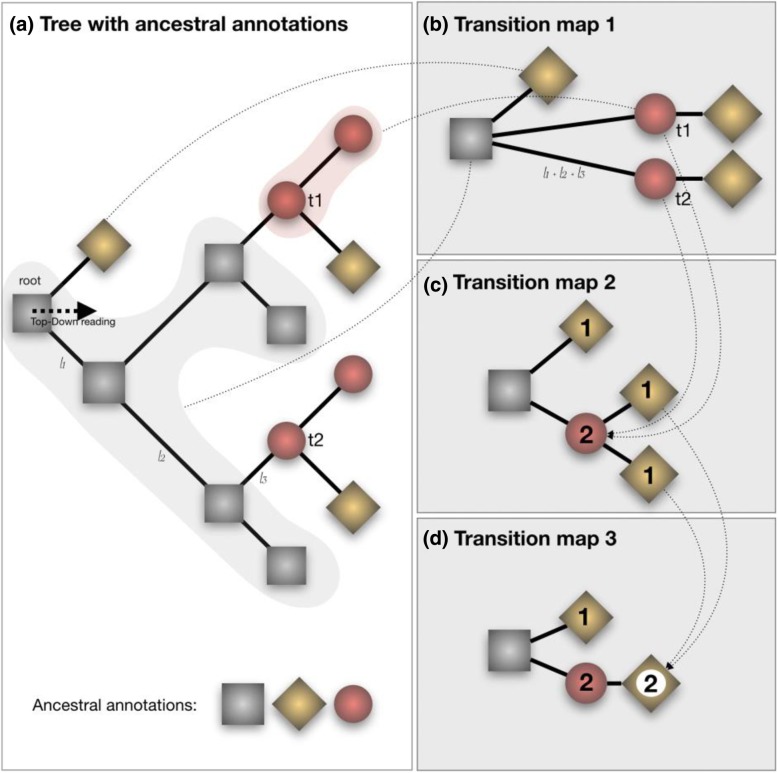Fig. 3.
Tree-like representations of transitions. (a) phylogenetic tree with ancestral annotations (gray squares, red circles and gold diamonds). (b), (c) and (d): corresponding transition maps. A transition is a change of an ancestral annotation along a phylogenetic tree (from the root to the leaves). The transition map layout 1 (b) is a multifurcating tree-like representation of transitions. A node is created in the map foreach transition observed in the phylogenetic tree (with the exception of the root). It can take into account branch lengths of the tree (sum of branch lengths along the path). The transition map layout 2 (c) gather transitions when they share the same father node in the layout 1. The number of transitions collapsed is then displayed (1 from « gray square » or « red circle » to « gold diamond », 2 from « gray square » to « red circle »). The same collapsing process is applied in turn to layout 2 to produce the transition map layout 3. Transition maps can be computed for different sets of ancestral annotations (e.g. different inference methods). When the output consist into probability distributions (e.g. Bayesian or F81-like methods), only the annotation having the greatest probability value is considered

